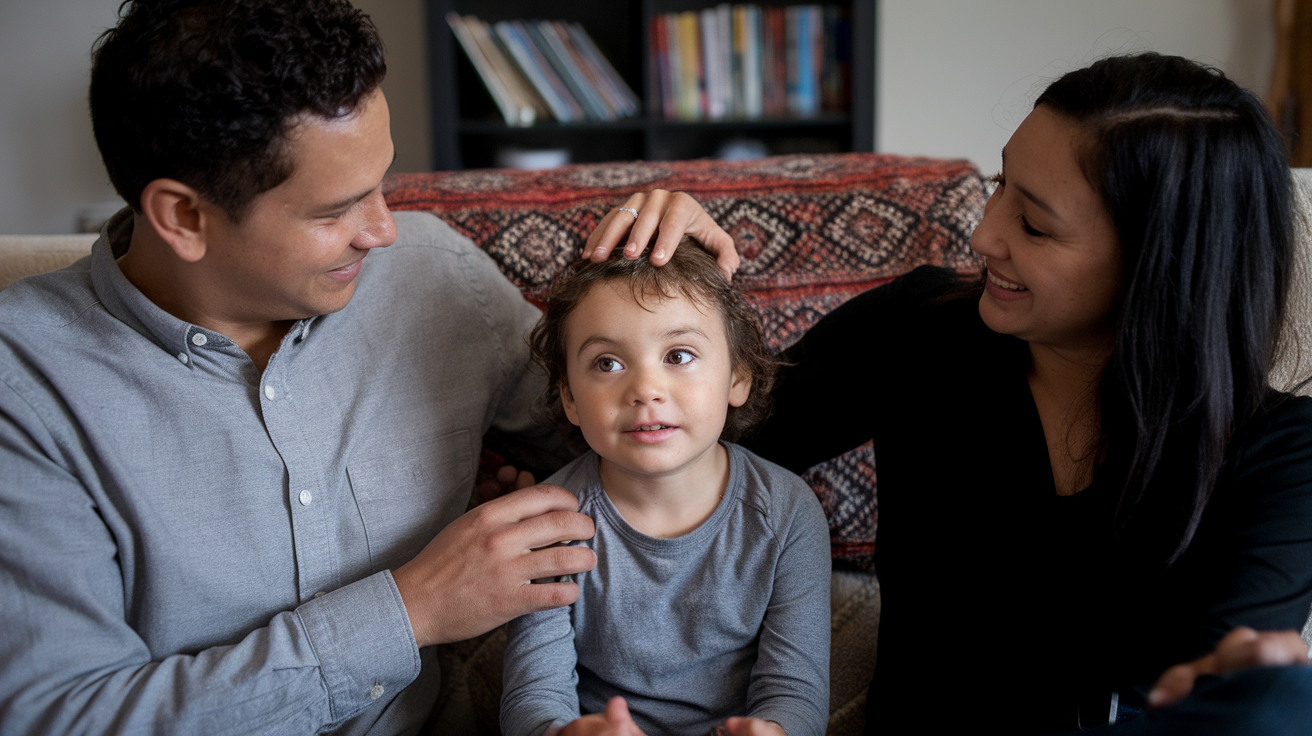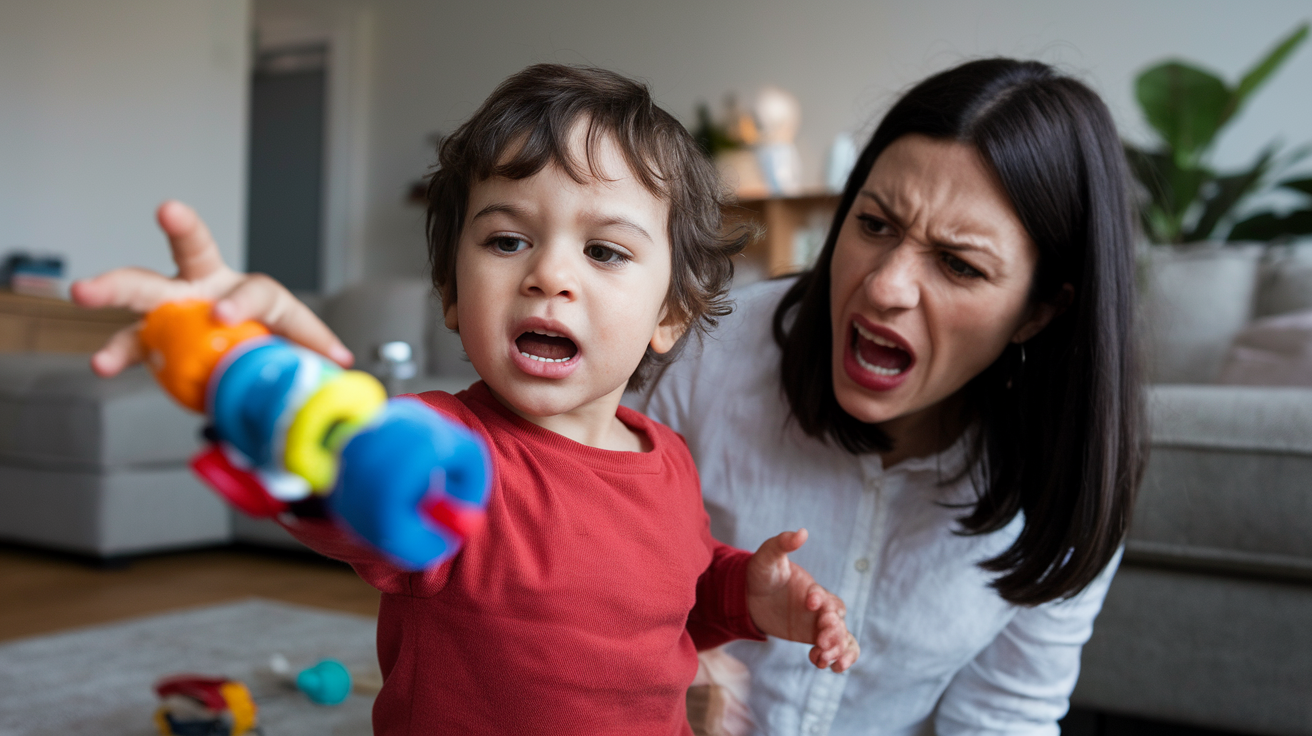Raising a toddler comes with its share of tough moments. When little ones test limits with tantrums, many parents feel lost about what to do next.
Finding the right way to handle these situations makes a big difference in your child’s growth.
Setting limits helps toddlers feel safe and learn better ways to behave. However, these limits need care and thought.
You need methods that work well for your child’s age and help them learn from their actions.
This guide will show you helpful ways to handle toddler behavior problems and simple steps that respect your child while teaching them better choices.
Understanding Toddler Misbehavior

Toddlers test limits as part of their normal growth. Their small tantrums often show they want more control over their world. When they act out, they’re trying to tell you something about their needs or feelings but don’t have the words yet.
A child’s brain is still growing, so they can’t control their feelings well. They might get upset when tired or hungry, or their daily routine changes. Sometimes, they copy behavior they see from others or test to see what happens when they don’t follow the rules.
Most toddlers need time to learn about feelings and rules. They don’t mean to be difficult – they’re learning how the world works. When parents know this, they can respond better to their child’s actions. Simple rules and steady responses help toddlers learn what good behavior looks like.
Each child grows at their own pace. Some take longer to learn self-control, while others catch on quickly. Understanding this helps parents stay patient and pick the right ways to guide their toddler’s behavior.
Consequences for Misbehavior Among Toddlers
Handling toddler misbehavior needs a gentle but firm approach. When little ones test limits, the right consequences help them learn better ways to act.
Parents can choose from several methods that teach good behavior while keeping their child’s trust and emotional well-being in mind.
Here are some effective ways to handle toddler misbehavior that build understanding rather than fear.
1. Natural Results

When a toddler misbehaves, natural results often teach the best lessons. For example, when they refuse to put away their toys, they might get misplaced. These simple events help them learn about taking care of their things.
Simple situations like these teach toddlers how the world works. They learn that their choices lead to certain outcomes. A child who won’t wear their mittens will feel cold hands. This teaches them why mittens matter.
Parents need to make sure these natural results stay safe. Small discomforts like cold hands teach good lessons. But always step in if a situation might hurt your child or others.
2. Time-In Method

The time-in method helps toddlers learn better behavior through connection. When your child acts out, sit with them in a quiet place. This gives them comfort while they work through big feelings.
During time-in, talk softely about what happened. Use words they understand. Say, “You felt mad when your sister took your toy.” This helps them name their feelings and learn better ways to show them.
Stay close until your toddler calms down. This might take five minutes or longer. Your presence helps them feel safe and loved, even when they make mistakes.
3. Loss of Privileges

When toddlers misuse items or break rules, removing related items can help. If they throw toys, those toys go away for a short time. Make sure the consequence connects to their action.
Keep these moments brief – usually, five to ten minutes works well. Longer times don’t help toddlers learn better. Tell them clearly why the item went away and how they can return it.
Return items when the set time ends. Talk about how to use them properly. Give praise when they make better choices with their things.
4. Positive Direction

Tell toddlers exactly what you want them to do. Instead of “no running,” say “please walk.” This clear guidance helps them understand good choices better than hearing “no” or “don’t.”
Use simple words and short sentences. “Hands are for gentle touches” works better than “stop hitting.” Show them what you mean – pat a stuffed animal softly to show gentle touches.
Praise them when they follow directions. Simple words like “Thank you for walking” or “Nice gentle hands” help them remember good choices.
5. Consistent Rules

Set clear rules that stay the same each day. When toddlers know what to expect, they feel more secure. Make rules simple, like “We sit to eat” or “Gentle hands with pets.”
Share these rules with everyone who cares for your toddler. Grandparents, teachers, and babysitters should know and follow the same guidelines. This helps toddlers learn faster.
Review rules often in simple ways. Talk about them during calm times, not just when problems happen. Use pictures or simple gestures to help toddlers remember what to do.
Types of Misbehavior
| Behavior | Description |
|---|---|
| Tantrums and Emotional Outbursts | Toddlers often show big feelings through crying and strong reactions. This happens when they feel tired, hungry, or can’t express their needs. |
| Hitting and Physical Actions | Some toddlers push, hit, or grab when upset. This often happens during playtime with others. They need help learning words to express their needs instead of using their hands. |
| Not Following Instructions | Many toddlers refuse to do what parents ask. They might run away during tasks or say “no” often. |
| Food-Related Problems | Picky eating and mealtime fuss are common. Some throw food or refuse to sit at the table while others might only want certain foods. |
| Sleep Resistance | Bedtime battles often happen with toddlers. They might cry at bedtime or keep getting up. A calm, steady bedtime routine helps them feel secure and ready for sleep. |
Why a Toddler Misbehaves
- Growing Independence: Toddlers want to do things by themselves. When they can’t, they get upset. This leads to saying “no” and refusing help.
- Limited Communication: Without enough words to share their needs, toddlers use actions. They cry, point, or act out to tell us what they want.
- Big Feelings: Small problems can cause big reactions in toddlers. They feel strong emotions but don’t know how to handle them yet.
- Testing Boundaries: Children test rules to learn how they work. They want to see what happens when they don’t listen. This helps them learn about limits.
- Physical Needs: Being tired or hungry changes how toddlers act. Missing naps or meals often leads to poor behavior.
Steps to Put a Stop to This Misbehavior
Step 1: Tell Them to Stop
First, tell your child in simple words what to stop doing. Say, “Please stop throwing toys” instead of just “no.” Keep your voice calm but firm.
Step 2: Show the Right Way Next
Show them what they should do instead. If they throw toys, take their hand and show them how to place toys gently. Make it easy for them to copy you.
Step 3: Give a Warning
Let them know what will happen if they keep going. Say, “If you throw toys again, we’ll put them away for a while.” Make sure you can follow through.
Step 4: Take Action
If they continue, follow through with what you said. Put the toys away calmly. Don’t get angry or make threats. Just do what you promised would happen.
Step 5: Talk About It Later
When everyone feels calm, talk about what happened. Keep it simple: “We don’t throw toys because it might break them or hurt someone. Let’s play nicely.”
Step 6: Praise Good Behavior
When you see them playing well, tell them. Say, “Thank you for being gentle with your toys.” This helps them learn what you want to see.
Dos and Don’ts of Toddler Discipline
| Do’s | Don’ts |
|---|---|
| Stay Calm | Don’t Yell |
| Keep steady voice and gentle actions. Your calm response helps your toddler manage their feelings better. | Shouting makes toddlers more upset and doesn’t help them learn better ways to act. |
| Set Clear Rules | Don’t Make Big Threats |
| Make simple rules your toddler can understand. Tell them what good behavior looks like. | Avoid saying things you won’t do. Empty threats teach toddlers not to take you seriously. |
| Follow Through | Don’t Give In |
| When you say something will happen, make it happen. This helps your toddler learn about results. | When you set a limit, stick to it. Giving in to tantrums makes them happen more often. |
| Give Choices | Don’t Compare |
| Let them pick between two good options. “Would you like to clean up blocks or cars first?” | Each child grows differently. Comparing them to others doesn’t help them learn. |
| Catch Good Moments | Don’t Expect Too Much |
| Notice when they behave well and tell them what they did right. | Remember, they’re still learning. Toddlers need time to understand and follow the rules. |
Conclusion
Helping toddlers learn good behavior takes time and patience.
The small steps taken today build better habits for tomorrow. When parents understand why their little ones act out and respond calmly, they create a safe space for learning.
Remember that each child grows at their own pace. What works for one toddler might need adjusting for another. The key lies in staying consistent with rules while showing love and understanding through tough moments.
When parents guide their toddlers with gentle firmness and clear limits, they help build confidence and self-control.
Every small success in managing behavior brings both parent and child closer to a more peaceful home.
Together, families can turn challenging moments into chances for growth and learning.








